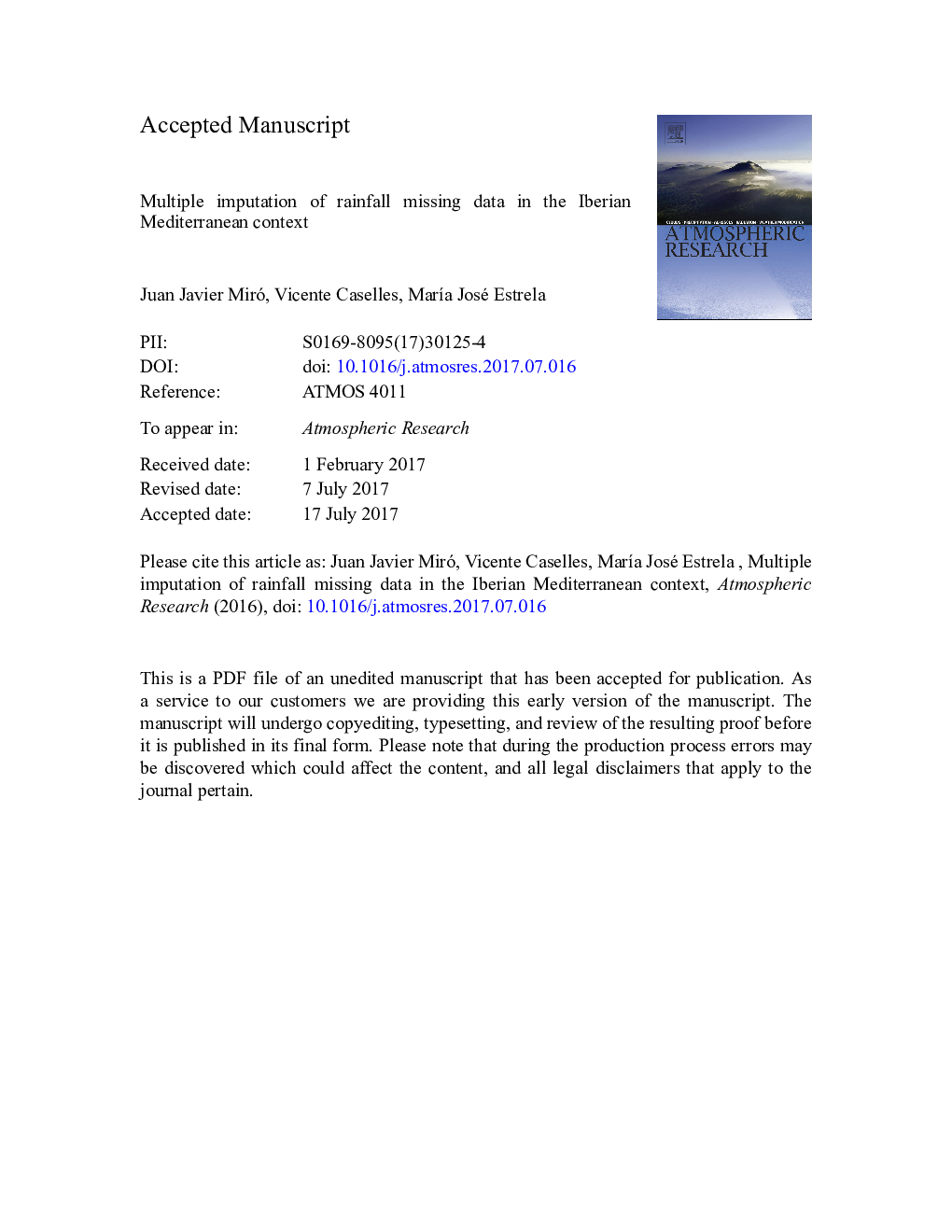| Article ID | Journal | Published Year | Pages | File Type |
|---|---|---|---|---|
| 5753751 | Atmospheric Research | 2017 | 34 Pages |
Abstract
Given the increasing need for complete rainfall data networks, in recent years have been proposed diverse methods for filling gaps in observed precipitation series, progressively more advanced that traditional approaches to overcome the problem. The present study has consisted in validate 10 methods (6 linear, 2 non-linear and 2 hybrid) that allow multiple imputation, i.e., fill at the same time missing data of multiple incomplete series in a dense network of neighboring stations. These were applied for daily and monthly rainfall in two sectors in the Júcar River Basin Authority (east Iberian Peninsula), which is characterized by a high spatial irregularity and difficulty of rainfall estimation. A classification of precipitation according to their genetic origin was applied as pre-processing, and a quantile-mapping adjusting as post-processing technique. The results showed in general a better performance for the non-linear and hybrid methods, highlighting that the non-linear PCA (NLPCA) method outperforms considerably the Self Organizing Maps (SOM) method within non-linear approaches. On linear methods, the Regularized Expectation Maximization method (RegEM) was the best, but far from NLPCA. Applying EOF filtering as post-processing of NLPCA (hybrid approach) yielded the best results.
Related Topics
Physical Sciences and Engineering
Earth and Planetary Sciences
Atmospheric Science
Authors
Juan Javier Miró, Vicente Caselles, MarÃa José Estrela,
